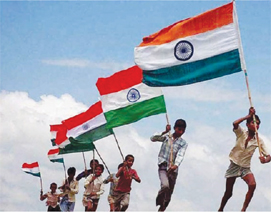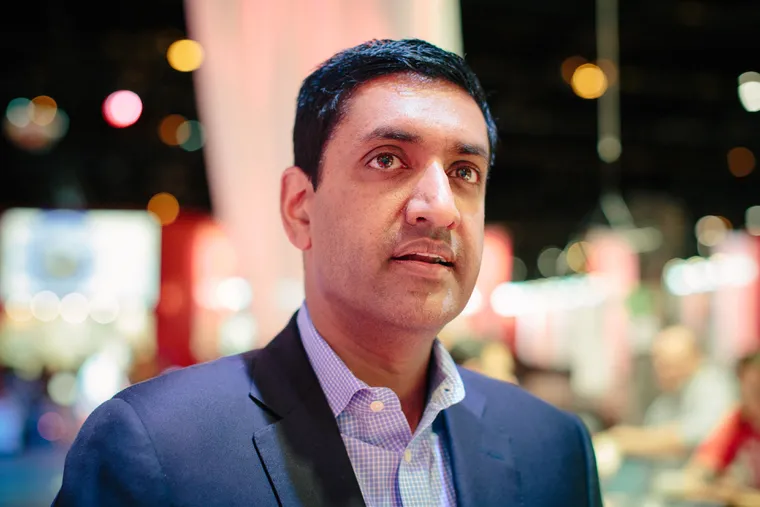
The macro challenge for India in the upcoming decade is to turn traditionally uneven growth into a high and stable trend. Given structural differences with East Asian economies, India will need to follow its own unique path.
Capital accumulation will drive India’s economy toward this desirable path, with the government and, increasingly, the private sector investing in infrastructure and manufacturing. Digital infrastructure is another potential driver of high growth.
Success will ultimately depend on India’s ability to reap its demographic dividend; increase labor force participation, including upskilling; boost private investment, with structural reforms in land, logistics and labor; and increase competitiveness, driven by foreign direct investment. Geopolitics could provide considerable tailwinds.
The trillion-dollar question is whether India can sustain high growth. That is, can it replicate the performance of the East Asian tigers over recent decades and improve the prospects and opportunities for its large and growing workforce? Importantly, India’s economy is more domestically driven and services-orientated than the East Asian tigers, so its path to success will have to be different.
Challenges & Initiatives in India’s Education System
Education is a fundamental right of every individual, and it plays a crucial role in shaping the future of a nation. Education has been a priority in India since the country’s independence in 1947. However, despite the government’s efforts to improve the education system, many challenges still need to be addressed.
One of the significant issues that India faces is access to education. Although the Government of India has made primary education free & compulsory for all children between the ages of six and fourteen, many children still do not have access to quality education. This is particularly true for children from rural areas and marginalized communities. The lack of infrastructure, inadequate facilities, and shortage of trained teachers are some of the reasons for this.
Another challenge that India’s education system faces is the quality of education. Despite increase in number of schools, the quality of education is not up to the mark. Many students cannot read or write even after completing their schooling. The lack of proper teacher training and outdated teaching methods are reasons for this.
Though declined recently, India’s education system is affected by a high dropout rate due to various reasons such as poverty, lack of interest, and inadequate facilities. This is particularly true for girls who drop out due to societal pressures and early marriage.
Healthcare
Despite significant progress in recent years, the healthcare system still faces a number of challenges, including inadequate funding, shortage of healthcare workers, and inadequate infrastructure.
It is important that India’s healthcare system be a priority and that both the government and private sector focus on addressing these challenges so that India’s citizens have access to good healthcare.
India’s competitive advantage lies in its large pool of well-trained medical professionals.
India is also cost competitive compared to its peers in Asia and western countries. The cost of surgery in India is about one-tenth of that in the US or Western Europe.
Inadequate Medical Infrastructure: India has a shortage of hospitals, particularly in rural areas, and many existing healthcare facilities lack basic equipment and resources.
According to the National Health Profile, India has only 0.9 beds per 1000 population and out of which only 30% are in rural areas.
Lack of Standardisation of Quality Care: Quality of healthcare provided in India varies significantly, with inadequate facilities and resources in rural areas and poor regulation leading to substandard care in some private healthcare facilities.
Non-Communicable Diseases: Non-communicable diseases (NCDs) are responsible for over 60% of all deaths in India, with high rates of chronic illnesses such as diabetes, cancer, and heart disease.
Lack of Adequate Mental Healthcare: India has one of the lowest numbers of mental health care professionals per capita.
Government’s spending on mental health is also very low. This has resulted in poor mental health outcomes and inadequate care for people suffering from mental illness.
Gap in Doctor-Patient Ratio: One of the most critical concerns is the gap in the doctor-patient ratio. According to the Indian Journal of Public Health India needs 20 lakh doctors by 2030.
However, currently a doctor in the government hospital attends to 11000 patients, which is more than the WHO recommendation of 1:1000.
Way Forward
Improving Infrastructure and Human Resource: There is a need for investing in the construction of new healthcare facilities and upgrading existing ones, as well as increasing funding for healthcare services (currently 2.1% of GDP) and medical research.
Also, there is a need for increasing the number of healthcare workers. It includes increasing the number of medical schools and training programs, as well as offering financial incentives to encourage healthcare professionals to work in underserved areas.
Accessibility of Quality Healthcare: There is a need for time bound implementing targeted programs to increase access to healthcare services for people living in poverty, members of lower castes, and specially women, as well as providing education and information about healthcare to these communities.
There is also a need for enforcing regulations, implementing quality control measures, increasing transparency and conducting audits of health care programmes.
Improving Mental Health Services: It includes increasing funding for mental health services, training healthcare workers to better address mental health issues, and reducing the social stigma associated with mental illness.
Addressing the Root Causes of Health Inequities: The healthcare system should work in coordination with other sectors, such as education, housing and sanitation to address the social determinants of health and reduce overall health inequities.
Sustainable Health Governance: This could include implementing better management systems, strengthening healthcare regulatory bodies and creating independent oversight mechanisms to ensure more effective and efficient healthcare services.
Curbing Communal Violence
India has to look forsSolutions to curb communal violence. These include:
Strong Legal Framework:
The enactment or implementation of laws and policies that protect the rights and interests of different communities.
The prevention or prohibition of hate speech, hate crimes, communal riots, etc. The prosecution or punishment of perpetrators or instigators of communal violence.
The provision or compensation of justice or relief to victims or survivors of communal violence.
Strengthening Institutional Mechanism:
The strengthening or reforming of political institutions and mechanisms that deal with communal issues.
The establishment or empowerment of independent or impartial bodies or agencies that monitor or investigate communal violence.
The promotion or enhancement of transparency, accountability, responsiveness, and inclusiveness in governance.
Educational Reforms:
The development or revision of curricula and textbooks that foster a culture of peace, tolerance, respect, and diversity among different communities.
The training or sensitization of teachers, students, parents, media, etc., on communal harmony and coexistence. The creation or expansion of opportunities for inter-community dialogue and exchange.
Social Reform:
The building or rebuilding of social capital and trust among different communities. The mobilization or involvement of civil society actors, such as NGOs, religious leaders, women groups, youth groups, etc., in promoting communal harmony and coexistence.
The recognition or celebration of the contributions and achievements of different communities to India’s society and culture.
Economic:
The improvement or redistribution of economic conditions and opportunities among different communities.
The alleviation or elimination of poverty, inequality, discrimination, etc., among marginalized groups.
The facilitation or integration of economic cooperation and collaboration among different communities.
Cultural:
The preservation or restoration of cultural diversity and pluralism in India. The protection or promotion of cultural heritage and sacred sites of different communities.
The encouragement or appreciation of cultural exchange and innovation among different communities.
Community Engagement:
Local community leaders, religious figures, and civil society organizations can play a pivotal role in promoting interfaith dialogue and understanding.
Grassroots efforts can foster connections that transcend religious differences.
Media Responsibility:
Media outlets bear a responsibility to report objectively and responsibly, avoiding sensationalism and biased coverage that can fan the flames of communal tensions.





Be the first to comment